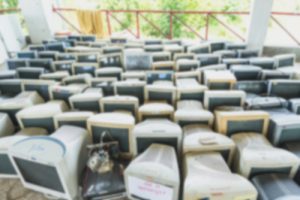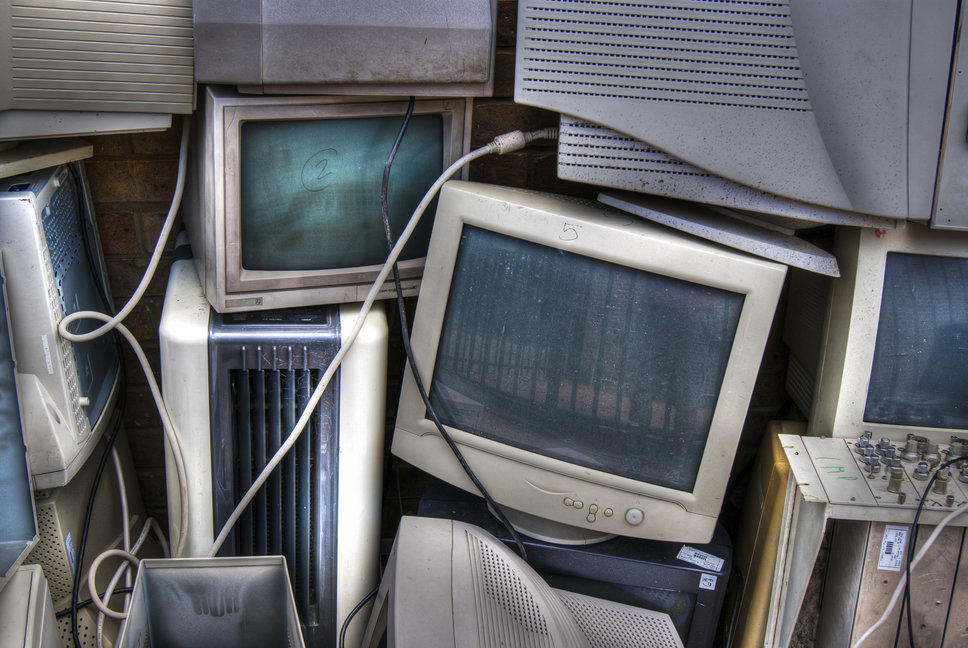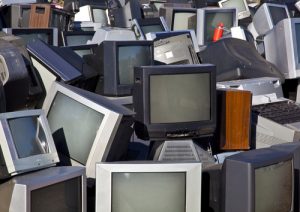As firms continue to search high and low for affordable and legitimate options for final disposition of CRT glass, several states with e-scrap programs are taking a stance on using the material as alternative daily cover (ADC).
The issue for officials in Wisconsin, Minnesota, Illinois and Vermont comes down to whether or not firms can meet original equipment manufacturer (OEM) recycling goals by sending CRT glass for use as ADC. And that debate is often tied into a second question: Are there other viable disposal options out there?
“We still believe there are markets for the material and it’s really more a matter of how much you’re willing to pay [to process the glass], not whether you can put it into the recycling stream,” Brad Wolbert, chief of the recycling and solid waste section at Wisconsin’s Department of Natural Resources, explained in an interview with E-Scrap News. Wisconsin is in the process of clarifying its stance to ensure the message is clear as “interest grows in landfilling and CRT-to-ADC options,” Wolbert said.
Officials in Wisconsin’s westerly neighbor, Minnesota, have come to the same conclusion. Amanda Cotton, who serves as the electronic waste coordinator at the Minnesota Pollution Control Agency (MPCA), told E-Scrap News firms cannot count glass-to-ADC toward OEM goals and have never been allowed to do so.
In a statement recently sent out to state contractors, MPCA wrote: “Management methods such as land disposal, beneficial use or alternative daily cover cannot be used to fulfill a manufacturer’s obligation. Please do due diligence with vendors to confirm that is the case.”
On the other side of the argument, Vermont permits its state contractor, Casella Waste Services, to send glass for processing as ADC at landfills. Cathy Jamieson of the Vermont Agency of Natural Resources told E-Scrap News more traditional processing options — sending glass to a lead smelter or to companies that will turn the material into new CRTs — simply aren’t abundant enough to require Casella to seek non-ADC options, at least for now.
“Even though the state recognizes ADC is not recycling, there are very few recycling options that are actually within the U.S.,” Jamieson said. “Until there’s a bona fide, full-scale recycling option available, it is acceptable for Casella to send CRTs to be treated and used as ADC.”
Perhaps the key cog in the conversation surrounding ADC thus far has been Casella’s sub-contractor, Kuusakoski Recycling. Through a partnership with Peoria Disposal Company, Kuusakoski processes glass as ADC at a facility in Peoria, Illinois. It is the only existing CRT-to-ADC option in the country, and it has hopes of processing 50,000 tons of glass per year for the next decade.
Kuusakoski and Peoria Disposal contend the process is more affordable than traditional avenues. The companies use a technology they say locks the lead within the glass to ensure it will never leach once used as ADC at landfills.
State officials at the Illinois EPA approved of the process and allowed companies to count CRT-to-ADC pounds toward OEM recycling goals, but, like Vermont, the Illinois EPA does not consider the process to be recycling per se. Dave Walters, who manages the waste reduction and compliance section of the state agency, told E-Scrap News the policy still stands.
“Illinois EPA’s position on CRTs as ADC has not changed and we continue to allow manufacturers to count the ADC toward the annual Illinois goals,” Walters wrote in an email.
 Markets and regulations are forcing companies active in the nation’s largest state electronics recycling program to landfill CRT glass. The move is legal, but it’s raising difficult questions for the many processors that have publicly vowed to avoid disposal.
Markets and regulations are forcing companies active in the nation’s largest state electronics recycling program to landfill CRT glass. The move is legal, but it’s raising difficult questions for the many processors that have publicly vowed to avoid disposal.

 Kenny Gravitt, who led Kentucky-based GES, could be facing prison time and steep fines in connection with the handling and disposal of CRT glass.
Kenny Gravitt, who led Kentucky-based GES, could be facing prison time and steep fines in connection with the handling and disposal of CRT glass. A judge has ruled in favor of Closed Loop Refining and Recovery’s former landlord in a case centered on CRT glass stockpiling. Just how much the defunct company will be asked to pay in damages, however, is still up in the air.
A judge has ruled in favor of Closed Loop Refining and Recovery’s former landlord in a case centered on CRT glass stockpiling. Just how much the defunct company will be asked to pay in damages, however, is still up in the air. The collapse of e-scrap company Creative Recycling Systems is still being felt in South Carolina, where nearly a dozen solid waste agencies are being sued by Creative’s former landlord.
The collapse of e-scrap company Creative Recycling Systems is still being felt in South Carolina, where nearly a dozen solid waste agencies are being sued by Creative’s former landlord. TVs dominate the end-of-life stream in Washington state now more than ever. They just don’t look like they used to, with fewer CRT devices and more flat-panel displays coming in the door.
TVs dominate the end-of-life stream in Washington state now more than ever. They just don’t look like they used to, with fewer CRT devices and more flat-panel displays coming in the door.